Gemstone
Think you know everything about gemstones? Did you know the top 10 rarest
gemstones in the world? Anyway, let's find out in this article! Gemstones are
not mere stones; they are geological marvels that have great significance
historically and culturally. Due to their scarcity, color differences, and the
process through which they are formed, they are amazing and valuable objects.
Gemstones have been valued and coveted since the ages of antiquity to the
present generation; some signify wealth, love, and magical powers. Some of the
rarest gemstones are Diamond, Ruby, Emerald, Sapphire, Alexandrine, and
Tourmaline, among others.
Here are some interesting facts:
Origins and Formation
Gems are minerals and have undergone the process of cutting and polishing for
the purpose of using them in ornaments and various other aspects. They are
formed under certain geological occurrences, such as when rocks are exposed to
high temperatures and pressure. The process may occur over millions of years,
and the gemstone formation is enabled in locations such as volcanic rocks,
pegmatites, or hydrothermal veins
Rarity
There are several factors that make gemstones very rare and limited in their
occurrence. Some gems are formed in specific geological conditions, which are
rare. On the same note, mining for gemstones and/or getting them to the
surface may be a tiresome and cumbersome process, which acts as another
explanation for their rarity.
Did You Know?
There are around 200 types of Gemstones that We know of till now!
What is the rarest gemstone? Well, None! Yes, you heard (read) it
right. Large stones that do not have inclusions (internal characteristics of a
gemstone that can be seen with the help of a loupe) are considered to be rarer
and, therefore, more valuable.
The Science Behind Gemstone Colors
Before science, here’s some maths! Around 60% of the value of gemstone is
determined by its color. The color of gemstones is mainly attributed to the
incorporation of trace elements in the gemstones and the structure of the
crystal lattice. The element chromium imparts red to rubies and green to
emeralds, while iron with titanium yields the blue color in sapphires.
The mineral Manganese imparts pink colors to tourmaline. Alexandrite also
undergoes a change of color because it experiences an exceptional method of
light absorption, which makes the stone truly extraordinary and the rarest gem
in the world.
Interesting Facts
The history and mythology of gemstones have placed a significant amount of
value on these stones for their aesthetic qualities and other plausible
advantages.
Various cultures valued the power of gemstones, including one amulet made from
a particular gemstone, which is believed to have the ability to ward off evil
spirits. Gemstones have also had meanings of status and affluence, used by
regents and nobility.
Here are some interesting facts on recent discoveries of some
rarest gemstones:
| Alexandrite |
Ural Mountains of Russia |
1830 |
- Appear green under daylight
- Transform into a purplish-red hue in incandescent light
- Belongs to the Chrysoberyl family
|
| Rubies |
Myanmar |
1990s |
- Highest quality rubies from Mogok, Myanmar
- Fetch the highest price per carat
- Accounting for 90% of total supply
|
| Tanzanite |
Tanzania |
1967 |
- Unique trichroic gemstone with only one source
- Rarity and unique hues make it highly attractive
- Deposits may be exhausted in 20 years.
|
| Paraiba Tourmaline |
Brazil |
Late 20th Century |
- Neon-blue tourmaline
- Skyrocketing prices
- Has international acclaim
|
| Pink Sapphires |
Madagascar |
1998 |
- Discovery in Ilakaka led to a rush for rare pink sapphires
|
| Colorless Sapphires |
Sri Lanka |
1970s |
- Discovery in Ratnapura
- Initiated gemstone heat treatment techniques
|
The wait is over! Here are the most popular and rarest gemstones in the world:
10. Jadeite
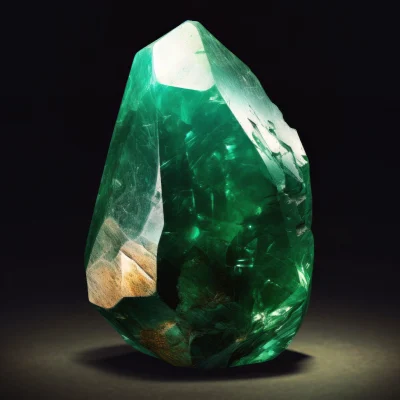
While usually associated with imperial jade green, jadeite mines also
contain lavender, yellow, orange-red, blue, black, and colorless
varieties. Mayan and Chinese civilizations valued jadeite and renowned it
with fascinating legends.
Its value depends on translucence and texture, with top-quality material
appearing full of water or like a drop of colored oil. Pricing is highly
subjective. There's a Chinese saying: ”Gold has value; jade is priceless.”
9. Musgravite
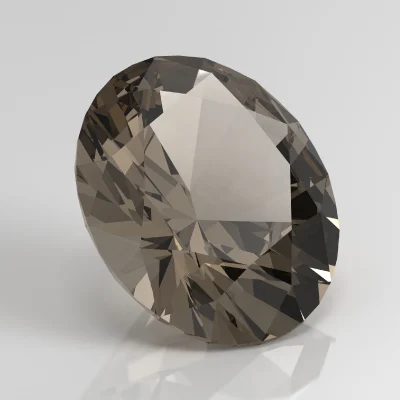
One of the rarest gemstones, Musgravite, found in 1967 at Musgrave
Ranges in Australia, is an aluminum oxide mineral containing magnesium
iron zinc in varying amounts. It can be green, blue, or purple; it is very
rare and hard, and it belongs to the same group as taaffeite.
Other deposits are located in Tanzania, Greenland, Madagascar, and
Antarctica. Due to its rarity, Musgravite is a highly sought-after
gemstone with an average price of $6000 per carat.
8. Alexandrite
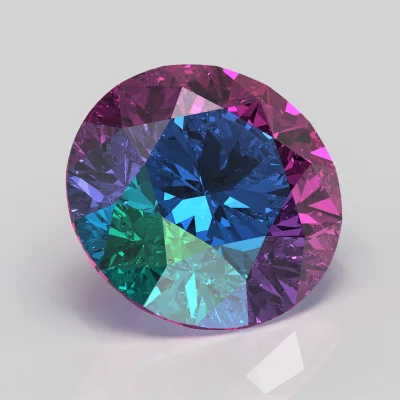
Alexandrite was first found in 1830 in the Urals, Russia, and the gemstone
is unique because it can change colors depending on the light’s intensity.
Because of the presence of tiny amounts of chromium, it fluoresces emerald
green to peacock blue by daylight while it shines ruby red to purple under
incandescent light.
This color-changing ability made this rare gem very popular among
the Russian nobility. This stone was named after Czar Alexander. It has
been found more recently in Brazil and other places. Alexandrite is
actually a June birthstone and is nowadays mined and, at the same time,
produced synthetically for use in jewelry.
7. Black Opal
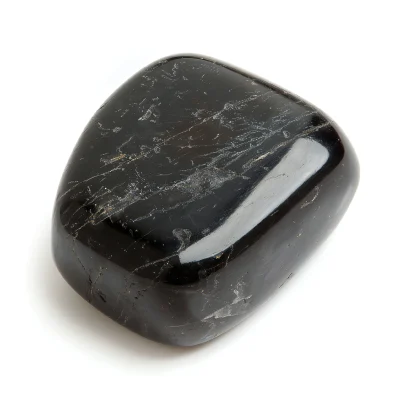
In general, black opal is one of the rarest and most demanded types of
opal and is mainly extracted in Lightning Ridge, New South Wales,
Australia. It is recognized by its body tone, which sets it apart from
other kinds of opals; black opals have a darker appearance. They are very
scarce, and their prices range from $3,500 per carat and above.
6. Paraiba Tourmaline
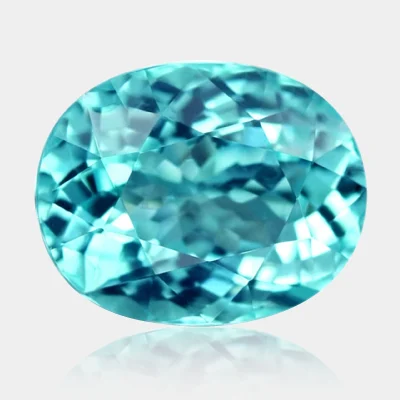
Paraíba tourmaline was first found in the 1980s in the Brazilian state of
Paraíba. The intensity of the blue-green color of Paraíba tourmaline
amazed the world of gems.
The price for these gems per carat was relatively high and steadily
increasing over the years. While there are similar tourmalines found in
Mozambique and Nigeria, Paraíba tourmaline still ranks among the most
unique and expensive gems in the world.
5. Red Beryl
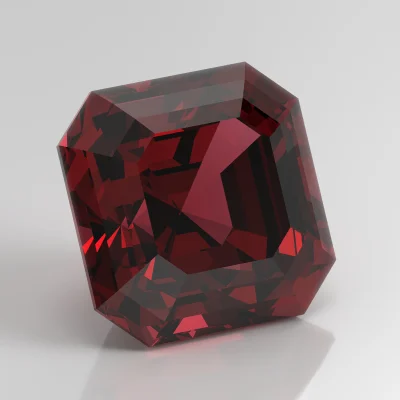
Red beryl is another gemstone from the beryl family, and it is closely
related to emerald, aquamarine, and morganite; it has a red color due to
the presence of Manganese.
It was found in the Wah Wah Mountains of Utah in 1904, where it is
estimated that just 5% of the excavated stones are gems. Because of its
rich red-to-raspberry-red hue and scarcity, high-quality red beryl is the
rarest gemstone and sells for between
$10,000 and $15,000 per carat.
4. Benitoite
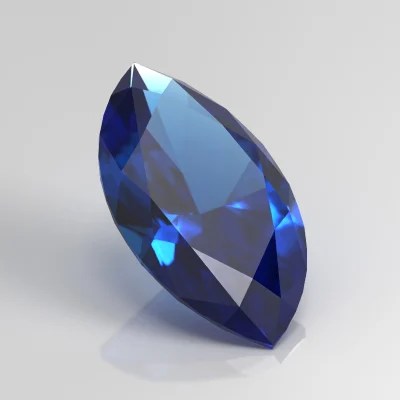
Benitoite is often similar to the diamond in terms of its scarcity and
‘fire,’ though it can be sapphire-blue as well, which is quite valuable.
Gem-quality benitoite is found only in San Benito County in the state of
California.
The available shades include a deep, rich blue with low visibility
regarding dispersion and a medium shade with fire components.
3. Taaffeite
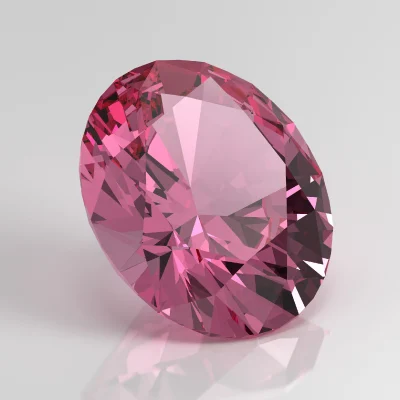
Originally found cut and polished in Dublin, Ireland, in 1945, the
taaffeite was first identified as a spinel. It is characterized by double
refraction and is mined from alluvial gravels in Sri Lanka and Tanzania.
Due to its scarcity, high-grade taaffeite is highly desirable and may cost
about $35,000 per carat.
2. Pink Diamond
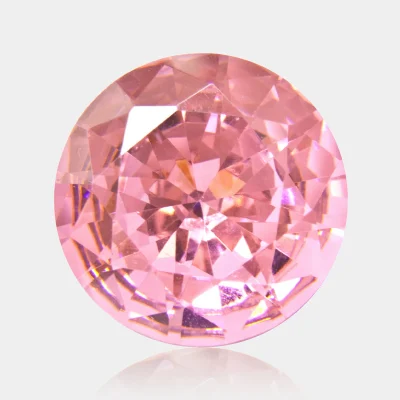
Diamonds are famous gemstones that possess a pink color, and they are very
scarce and have a special charm. The color of their specific kind is
normally attributed to EDS-specific plastic distortions during formation.
They vary from flawless to included and have been recovered in different
parts of the world, but about 80% of the total was mined in Australia’s
now-closed Argyle diamond mine. These diamonds are highly polished and
very rare in the market.
1. Painite
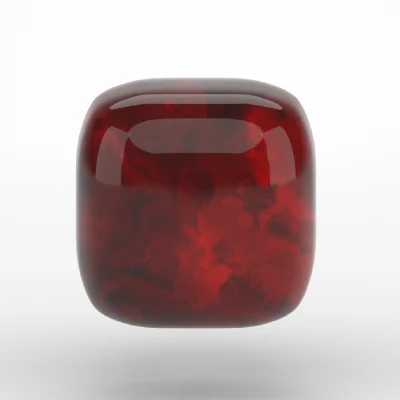
Painite mineral was found in Myanmar in the year 1951 and for many years,
it was esteemed to be the rarest mineral. Prior to the 1980s, there were
only two specimens recorded.
Despite these discoveries, it is estimated that only a thousand of these
pieces have been found, and many of these are not suitable for carving.
Painite is known for its red-brownish color and elevated demand; the
highest-quality stones may cost up to $60,000 per carat.
Some Final Words!
While buying the rarest gemstones, it is very important to purchase
from reputable dealers such as BOLD Precious Metals, who recently launched
their latest jewerly collection.
Certification guarantees that one is getting a genuine product that has not
been treated or altered in any way, thus guaranteeing the buyer’s
investment. Since each gem we acquire is scrutinized to the last detail,
BOLD Precious Metals gives you the assurance of acquiring true treasures
with lasting worth.
Gemstone
Think you know everything about gemstones? Did you know the top 10 rarest
gemstones in the world? Anyway, let's find out in this article! Gemstones are
not mere stones; they are geological marvels that have great significance
historically and culturally. Due to their scarcity, color differences, and the
process through which they are formed, they are amazing and valuable objects.
Gemstones have been valued and coveted since the ages of antiquity to the
present generation; some signify wealth, love, and magical powers. Some of the
rarest gemstones are Diamond, Ruby, Emerald, Sapphire, Alexandrine, and
Tourmaline, among others.
Here are some interesting facts:
Origins and Formation
Gems are minerals and have undergone the process of cutting and polishing for
the purpose of using them in ornaments and various other aspects. They are
formed under certain geological occurrences, such as when rocks are exposed to
high temperatures and pressure. The process may occur over millions of years,
and the gemstone formation is enabled in locations such as volcanic rocks,
pegmatites, or hydrothermal veins
Rarity
There are several factors that make gemstones very rare and limited in their
occurrence. Some gems are formed in specific geological conditions, which are
rare. On the same note, mining for gemstones and/or getting them to the
surface may be a tiresome and cumbersome process, which acts as another
explanation for their rarity.
Did You Know?
There are around 200 types of Gemstones that We know of till now!
What is the rarest gemstone? Well, None! Yes, you heard (read) it
right. Large stones that do not have inclusions (internal characteristics of a
gemstone that can be seen with the help of a loupe) are considered to be rarer
and, therefore, more valuable.
The Science Behind Gemstone Colors
Before science, here’s some maths! Around 60% of the value of gemstone is
determined by its color. The color of gemstones is mainly attributed to the
incorporation of trace elements in the gemstones and the structure of the
crystal lattice. The element chromium imparts red to rubies and green to
emeralds, while iron with titanium yields the blue color in sapphires.
The mineral Manganese imparts pink colors to tourmaline. Alexandrite also
undergoes a change of color because it experiences an exceptional method of
light absorption, which makes the stone truly extraordinary and the rarest gem
in the world.
Interesting Facts
The history and mythology of gemstones have placed a significant amount of
value on these stones for their aesthetic qualities and other plausible
advantages.
Various cultures valued the power of gemstones, including one amulet made from
a particular gemstone, which is believed to have the ability to ward off evil
spirits. Gemstones have also had meanings of status and affluence, used by
regents and nobility.
Here are some interesting facts on recent discoveries of some
rarest gemstones:
| Alexandrite |
Ural Mountains of Russia |
1830 |
- Appear green under daylight
- Transform into a purplish-red hue in incandescent light
- Belongs to the Chrysoberyl family
|
| Rubies |
Myanmar |
1990s |
- Highest quality rubies from Mogok, Myanmar
- Fetch the highest price per carat
- Accounting for 90% of total supply
|
| Tanzanite |
Tanzania |
1967 |
- Unique trichroic gemstone with only one source
- Rarity and unique hues make it highly attractive
- Deposits may be exhausted in 20 years.
|
| Paraiba Tourmaline |
Brazil |
Late 20th Century |
- Neon-blue tourmaline
- Skyrocketing prices
- Has international acclaim
|
| Pink Sapphires |
Madagascar |
1998 |
- Discovery in Ilakaka led to a rush for rare pink sapphires
|
| Colorless Sapphires |
Sri Lanka |
1970s |
- Discovery in Ratnapura
- Initiated gemstone heat treatment techniques
|
The wait is over! Here are the most popular and rarest gemstones in the world:
10. Jadeite

While usually associated with imperial jade green, jadeite mines also
contain lavender, yellow, orange-red, blue, black, and colorless
varieties. Mayan and Chinese civilizations valued jadeite and renowned it
with fascinating legends.
Its value depends on translucence and texture, with top-quality material
appearing full of water or like a drop of colored oil. Pricing is highly
subjective. There's a Chinese saying: ”Gold has value; jade is priceless.”
9. Musgravite

One of the rarest gemstones, Musgravite, found in 1967 at Musgrave
Ranges in Australia, is an aluminum oxide mineral containing magnesium
iron zinc in varying amounts. It can be green, blue, or purple; it is very
rare and hard, and it belongs to the same group as taaffeite.
Other deposits are located in Tanzania, Greenland, Madagascar, and
Antarctica. Due to its rarity, Musgravite is a highly sought-after
gemstone with an average price of $6000 per carat.
8. Alexandrite

Alexandrite was first found in 1830 in the Urals, Russia, and the gemstone
is unique because it can change colors depending on the light’s intensity.
Because of the presence of tiny amounts of chromium, it fluoresces emerald
green to peacock blue by daylight while it shines ruby red to purple under
incandescent light.
This color-changing ability made this rare gem very popular among
the Russian nobility. This stone was named after Czar Alexander. It has
been found more recently in Brazil and other places. Alexandrite is
actually a June birthstone and is nowadays mined and, at the same time,
produced synthetically for use in jewelry.
7. Black Opal

In general, black opal is one of the rarest and most demanded types of
opal and is mainly extracted in Lightning Ridge, New South Wales,
Australia. It is recognized by its body tone, which sets it apart from
other kinds of opals; black opals have a darker appearance. They are very
scarce, and their prices range from $3,500 per carat and above.
6. Paraiba Tourmaline

Paraíba tourmaline was first found in the 1980s in the Brazilian state of
Paraíba. The intensity of the blue-green color of Paraíba tourmaline
amazed the world of gems.
The price for these gems per carat was relatively high and steadily
increasing over the years. While there are similar tourmalines found in
Mozambique and Nigeria, Paraíba tourmaline still ranks among the most
unique and expensive gems in the world.
5. Red Beryl

Red beryl is another gemstone from the beryl family, and it is closely
related to emerald, aquamarine, and morganite; it has a red color due to
the presence of Manganese.
It was found in the Wah Wah Mountains of Utah in 1904, where it is
estimated that just 5% of the excavated stones are gems. Because of its
rich red-to-raspberry-red hue and scarcity, high-quality red beryl is the
rarest gemstone and sells for between
$10,000 and $15,000 per carat.
4. Benitoite

Benitoite is often similar to the diamond in terms of its scarcity and
‘fire,’ though it can be sapphire-blue as well, which is quite valuable.
Gem-quality benitoite is found only in San Benito County in the state of
California.
The available shades include a deep, rich blue with low visibility
regarding dispersion and a medium shade with fire components.
3. Taaffeite

Originally found cut and polished in Dublin, Ireland, in 1945, the
taaffeite was first identified as a spinel. It is characterized by double
refraction and is mined from alluvial gravels in Sri Lanka and Tanzania.
Due to its scarcity, high-grade taaffeite is highly desirable and may cost
about $35,000 per carat.
2. Pink Diamond

Diamonds are famous gemstones that possess a pink color, and they are very
scarce and have a special charm. The color of their specific kind is
normally attributed to EDS-specific plastic distortions during formation.
They vary from flawless to included and have been recovered in different
parts of the world, but about 80% of the total was mined in Australia’s
now-closed Argyle diamond mine. These diamonds are highly polished and
very rare in the market.
1. Painite

Painite mineral was found in Myanmar in the year 1951 and for many years,
it was esteemed to be the rarest mineral. Prior to the 1980s, there were
only two specimens recorded.
Despite these discoveries, it is estimated that only a thousand of these
pieces have been found, and many of these are not suitable for carving.
Painite is known for its red-brownish color and elevated demand; the
highest-quality stones may cost up to $60,000 per carat.
Some Final Words!
While buying the rarest gemstones, it is very important to purchase
from reputable dealers such as BOLD Precious Metals, who recently launched
their latest jewerly collection.
Certification guarantees that one is getting a genuine product that has not
been treated or altered in any way, thus guaranteeing the buyer’s
investment. Since each gem we acquire is scrutinized to the last detail,
BOLD Precious Metals gives you the assurance of acquiring true treasures
with lasting worth.










